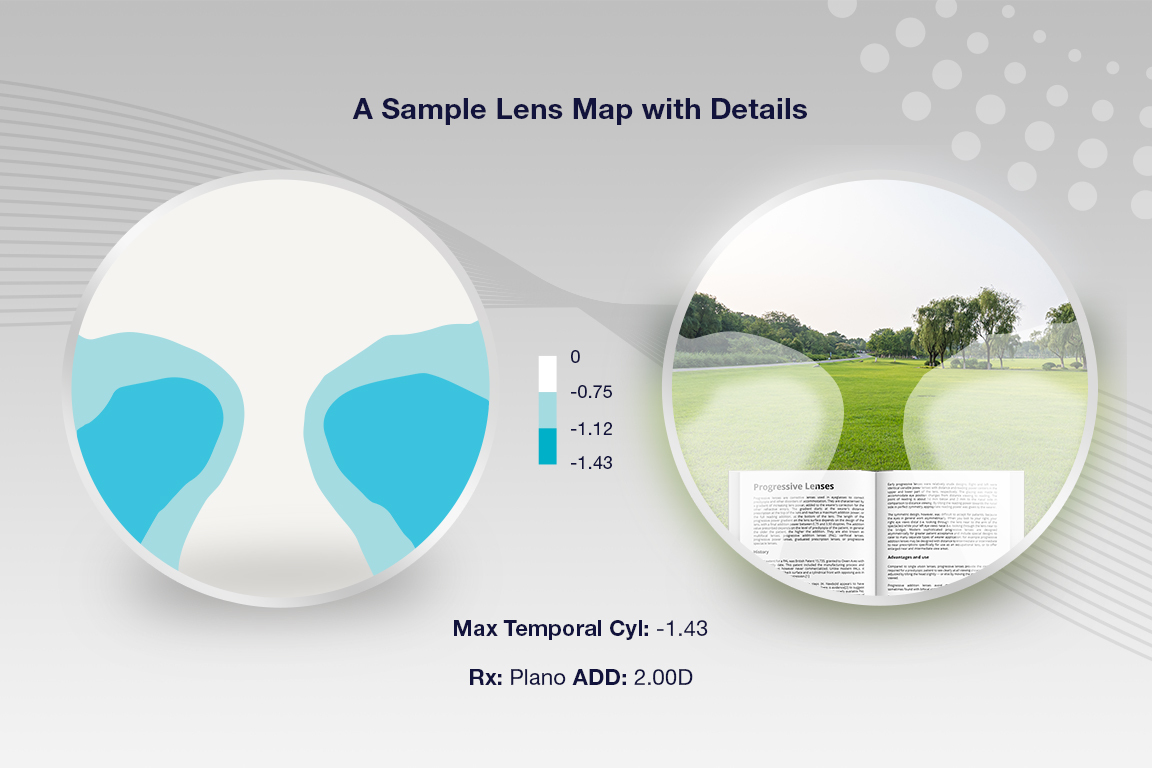Contact lenses are a popular form of optical correction and can contribute to a significant portion of a practice’s revenue. As the Australian contact lens market is expected to demonstrate a significant compound annual growth rate all the way to 2028¹, it can be disheartening to find your contact lens sales diminishing rather than increasing. Among other reasons, a practitioner can lose their contact lens patients to online retailers, another optometry clinic, or to contact lens intolerance. But take heart, there are various steps you can take to retain your contact lens patients (and sales). Keep reading to find out how to manage contact lens intolerance and dropout.
The Problem of Contact Lens Intolerance
Just the very name sounds uncomfortable – the inability to wear a contact lens due to discomfort, suboptimal vision, or adverse ocular health effects, requiring the lens to be removed.²,³ This leads to contact lens dropout, which is not an ideal situation for either the patient nor the practice. Contacts offer a host of benefits for both paediatric and adult wearers, from improving self-esteem to being able to play sports without the hindrance of spectacles.⁴
The phenomenon of contact lens dropout encompasses more than intolerance. It includes those who cease lens wear due to cost concerns or the perceived superior convenience of spectacles.⁴ However, when it comes to dropping out due to contact lens intolerance, the most common reasons reported are discomfort and poor vision.⁴
For many, the definition of “successful” contact lens wear is somewhat lofty and ambitious – the ability to comfortably wear contacts for at least 12 hours a day, at least 6 days a week, with vision equal to or superior to that achieved with glasses.⁴ However, contact lens-related discomfort is evidently a major obstacle to many patients being able to claim successful contact lens wear. Discomfort from contacts can range from intermittent episodes to persistent pain or irritation. Concerningly (but perhaps unsurprisingly), contact lens discomfort has an incidence reported as high as 94% among contact lens-wearing populations.⁵
A 2017 study investigating the dropout rates of new contact lens wearers (98% being fitted with soft contact lenses) over the course of the first 12 months found that at the end of the year, 26% had already ceased lens wear. In fact, of those who dropped out of contact lenses, a quarter of these occurred within the first month of being fitted and almost half within 60 days. The top reported reasons for contact lens cessation were dissatisfaction with vision (47%) and discomfort (25%).⁶
So, while an optometry practice may still lose some contact lens patients to online retailers or other clinics down the road, proactively addressing contact lens intolerance can help you keep at least some of your contact lens patients (and contact lens revenue).
4 Tips on Discussing Lens Intolerance with Patients
Patients don’t realise what they’re experiencing is “contact lens intolerance”. All they know is they can see better in their glasses or that every time they insert a contact lens, it feels like the moisture is being sucked from their ocular surface. This leads to the patient either approaching their optometrist (or a different optometrist) for a solution, attempting to find their own solution (such as over-the-counter lubricant drops), or, not uncommonly, just quietly discontinuing contact lens wear. While the first action has the best chance of a positive outcome, the third option leaves the patient disillusioned with contact lens wear and can damage the relationship with the prescribing clinician.
Whether you’re the original optometrist who prescribed the contact lenses or troubleshooting someone else’s contact lens-wearing patient for the first time, it pays to take a proactive approach in order to keep a disgruntled patient in their contacts. Here are some tips to consider.
1. Always ask.
Though a patient may not be fully comfortable or satisfied with their lenses, it may not cross their mind to mention it during a routine eye exam. In fact, some patients may not even realise that their contact lens discomfort is not normal and something that should be addressed.²
Part of a good clinical interview is asking the patient about their contact lenses. This goes beyond “are your contacts comfortable?” but includes details about their contact lens wearing habits. How often and for how long do they wear their contacts? Do they wish they could wear their contacts more often/for longer? What’s their cleaning routine like? How often do you fall asleep in your lenses? How often do you discard your contacts and open a fresh pair?
This opens the conversation for a patient to tell you they’re dissatisfied with their contacts and may be on the verge of dropping out. It also gives you some clues as to what may be contributing to their contact lens intolerance (for example, they’ve been wearing their fortnightly lenses for 3 months).
2. Offer an alternative lens.
In the 2017 study mentioned earlier, the researchers found that only 29% of patients who ceased contact lens wear were offered an alternative lens option.⁶ Given the wide range of contact lens materials and parameters available, a patient suffering from contact lens intolerance should always be offered an alternative lens where appropriate. If vision is unacceptable due to the constant rotating of one brand of toric lens, try a different brand with a different method of stabilisation. Accepting that your patient is intolerant to that particular pair of contacts and letting them walk away should never be the solution.
3. Address contact lens noncompliance.
Discussing poor compliance can often be an awkward conversation. Depending on the rapport you’ve built with the patient and their personality, you may choose to put a light-hearted spin on your gentle rebuke, or you may need to take a more professional but firm approach. Either way, poor contact lens habits should not be overlooked as it can lead to or exacerbate existing intolerance, and in the worst-case scenario, cause vision-threatening complications.
4. Know when contact lens wear is simply not viable for this patient (and then offer an alternative solution).
Some patients are simply not good candidates for contact lens wear. Though they may be disappointed, these patients should still be made to feel as if you are offering them a solution to improve their situation, whatever the original reason for their interest in contact lenses. For some, it may be a referral to a refractive ophthalmologist; for others, it may be taking the time to locate perfectly fitting sports goggles.
Summary
Taking a proactive approach to addressing contact lens intolerance is beneficial for both you and your patients. By putting in the time and effort to discuss the problem and find a solution, you keep your patients happily in their lenses while building your reputation as a caring problem solver.
References
- Business Wire. Australia Contact Lens Markets, 2018-2022 & 2023-2028: From Myopia to Innovation – Market on the Rise – ResearchAndMarkets.com. https://www.businesswire.com/. 2023. Available at: https://www.businesswire.com/news/home/20230815213947/en/Australia-Contact-Lens-Markets-2018-2022-2023-2028-From-Myopia-to-Innovation—Market-on-the-Rise—ResearchAndMarkets.com#:~:text=Australia%20contact%20lens%20market%20is,capabilities%20start%20to%20deteriorate%20gradually. (Accessed August 2023).
- Eyes on Eyecare. How to Talk to Patients About Contact Lens Intolerance. https://eyesoneyecare.com/. 2023. Available at: https://eyesoneyecare.com/resources/how-talk-to-patients-about-contact-lens-intolerance/. (Accessed August 2023).
- Centre for Sight. Contact Lens Intolerance. https://www.centreforsight.com/. 2023. Available at: https://www.centreforsight.com/blog/contact-lens-intolerance. (Accessed August 2023).
- Pucker A, Tichenor A. A Review of Contact Lens Dropout. Clinical Optometry. 2020;12:85-94.
- Alipour F, Khaheshi S, Soleimanzadeh M, Heidarzadeh S, Heydarzadeh S. Contact Lens-related Complications: A Review. J Ophthalmic Vis Res. 2017;12(2):193-204.
- Sulley A, Young G, Hunt C. Factors in the success of new contact lens wearers. Cont Lens Anterior Eye. 2017;40(1):15–24





